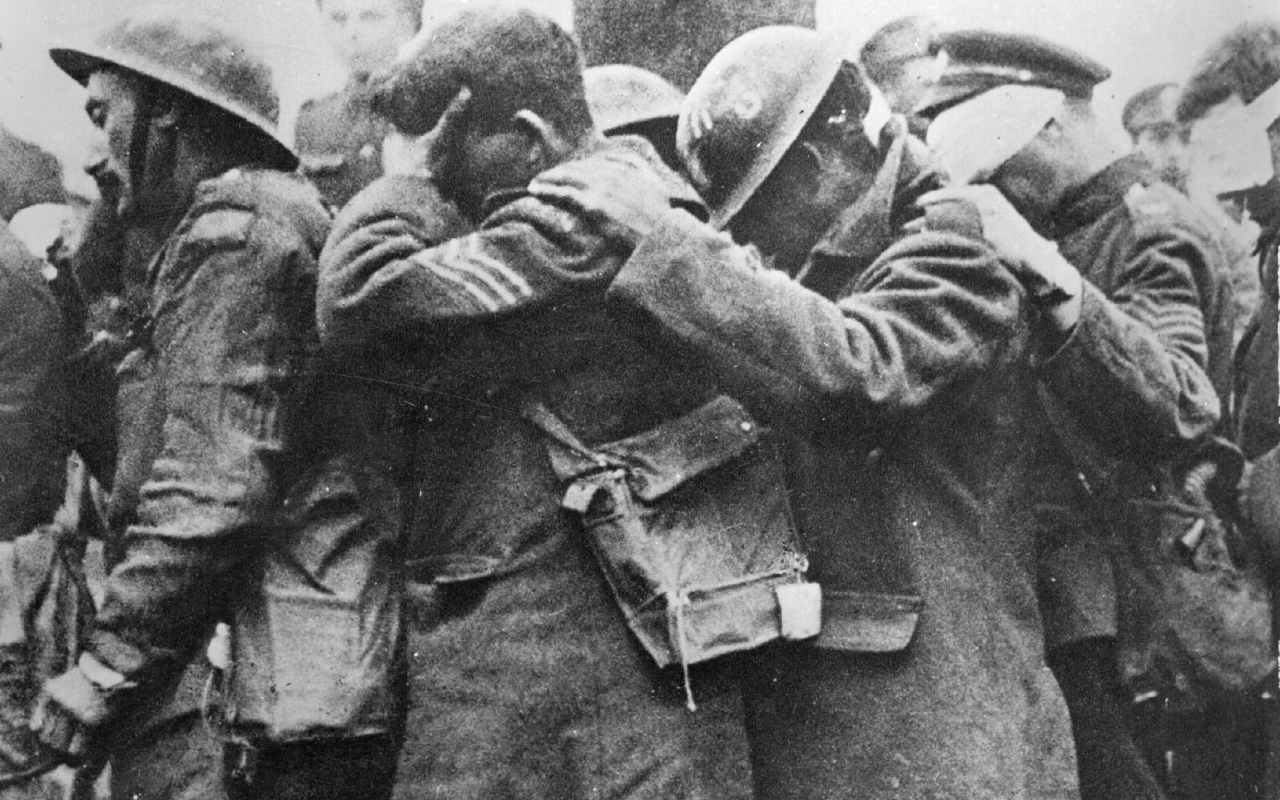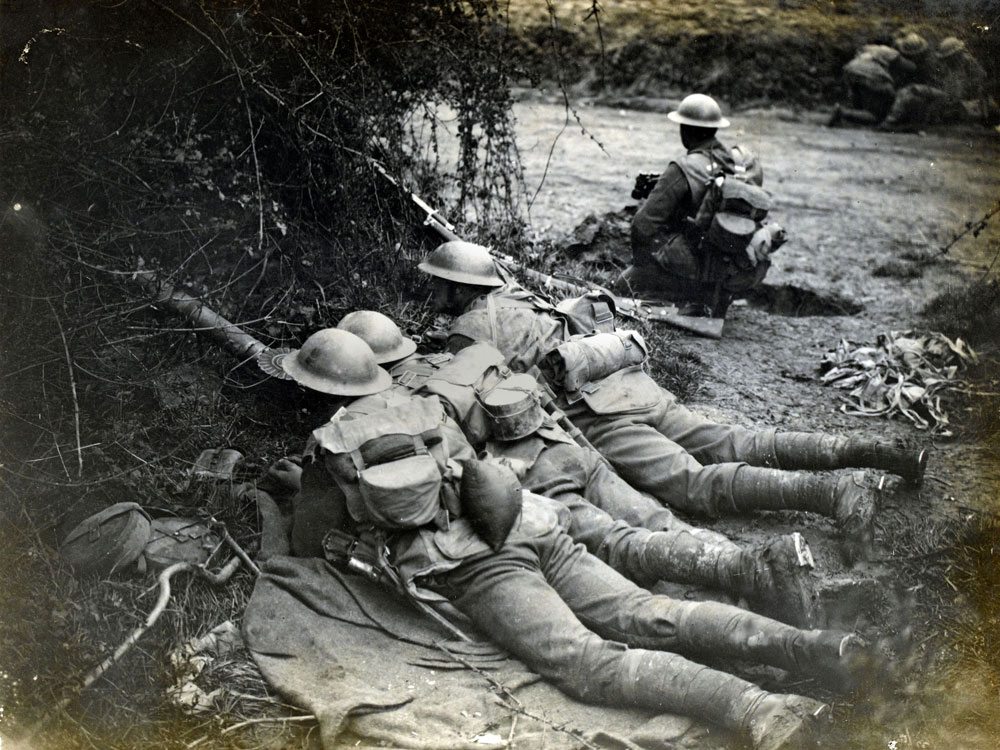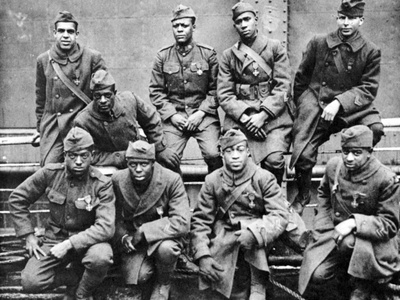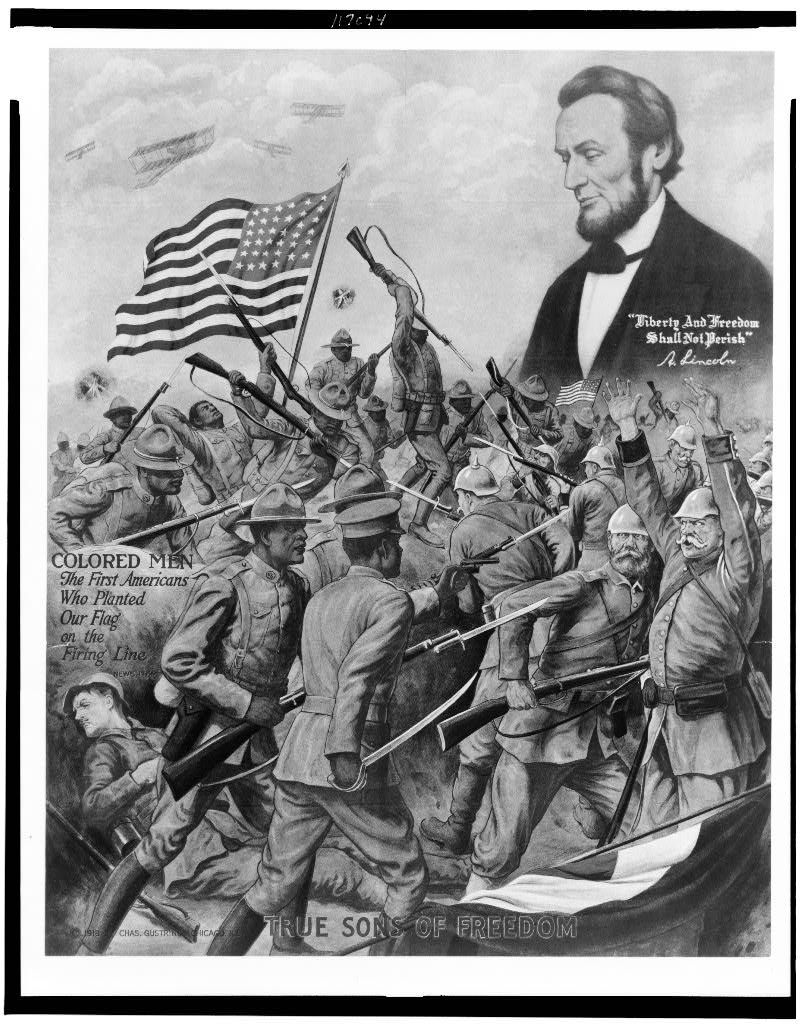Overwhelming Offensive Breaks the Allied Lines.
Desperate Need for Reinforcements; Send Black Americans to the Battlefield.
Special to The Great War Project.
(15 May) The German High Command has not given up hope of breaking the Allied line on the Western Front.

British soldiers hit by German gas shells, spring offensive, 1918.
So reports historian Martin Gilbert that in May a century ago, they try again, hoping even to reach Paris.
“Four thousand guns opened fire in the very early hours of May 27,” writes Gilbert, “The Third Battle of the Aisne River had begun.”
The French quickly lose four divisions of soldiers as the attacking German army drives through the French line to a depth of twelve miles.
The fire power thrown against the French is “overwhelming.”
“The guns continued to fire,” according to one account, and resistance did not cease until every man was killed or captured.”

British machine gun unit, German spring offensive, 1918.
Total Allied losses continue to mount, with the British army losing some 280,000 dead or wounded, the French up to 70,000 casualties.
“There was a desperate need for reinforcements to stave off complete collapse along the British line,” reports historian Gary Mead, “and some of the American units were ordered into the fray.”
Adds Mead, “the Allies should have been better prepared for this offensive than they were. After all, they had good intelligence as to what the Germans were planning; even Pershing had been informed.”
British command general Douglas Haig declares that the British have their “backs to the wall – fighting for survival along a battle front of 150 miles.”
All of this German action in the late spring of 1918 puts into sharp focus the need on the Allied side to get more Americans into the fight. Writes historian Mead, “it once more brought to the fore the Allied demand to be able to control, through amalgamation, the deployment of the dough boys.”
In May a century ago, Pershing insists: “The morale of our soldiers depends upon their fighting under our own flag.”
“In their efforts to get hold of American troops,” reports historian Mead,
“British and French military and political leaders did their utmost to ignore, belittle, and undermine Pershing. They even sometimes simply behaved as though he was not there.”
One unpleasant wrinkle to Pershing’s posture stands out, writes historian Mead. “Pershing may have stood his ground when it came to control of the white doughboys under his command, but he showed less concern for the black regiments entrusted to him.”
“He offered the black American 92nd division to Haig.”

American black 92nd division.
“I am informed,” Pershing declares to Haig, “that the 92nd Division is in a good state of training in the United States, and I have no reason to believe that its employment under your command would be accompanied by any unusual difficulties.”
“I hope that the inclusion of the 92nd Division among the American troops to be placed under your command is acceptable to you and that you will be able to overcome any objections raised by your War Office.”

Poster of black troops fighting Germans.
There were some generals among the British ranks that held prejudices similar to those on the American side. But the British understood just how dire their position was on the battlefield.
